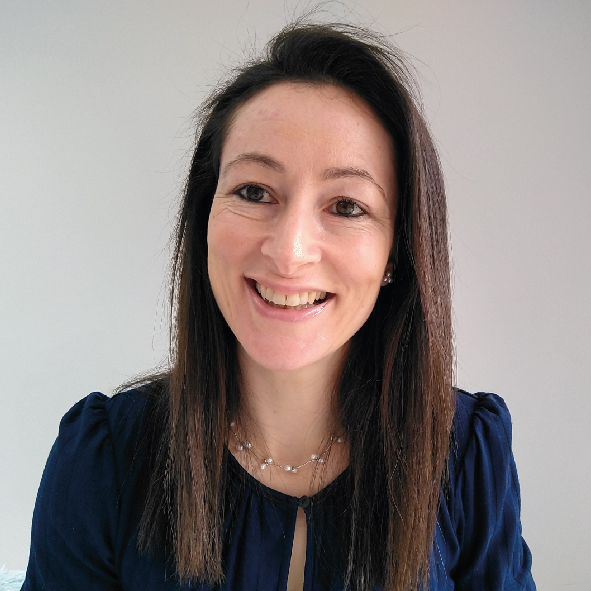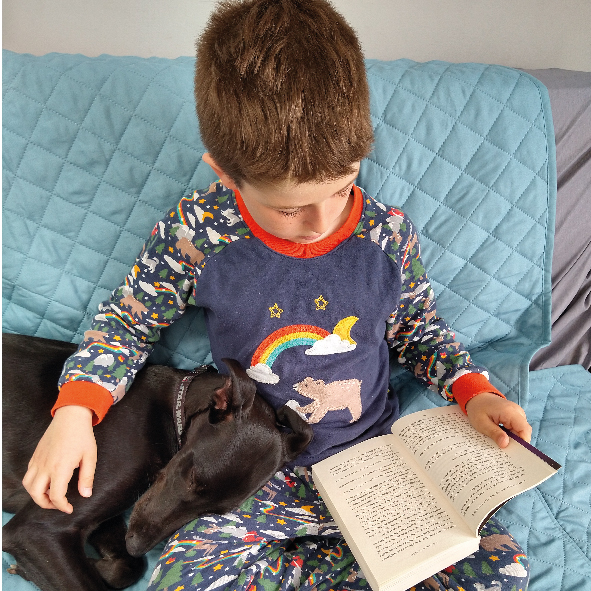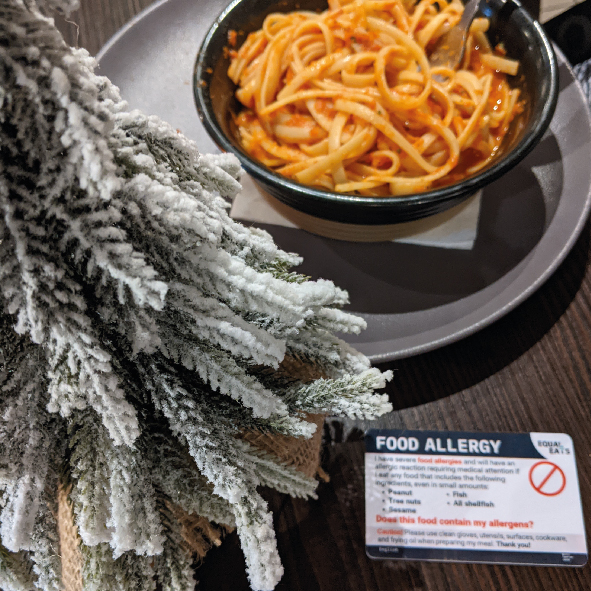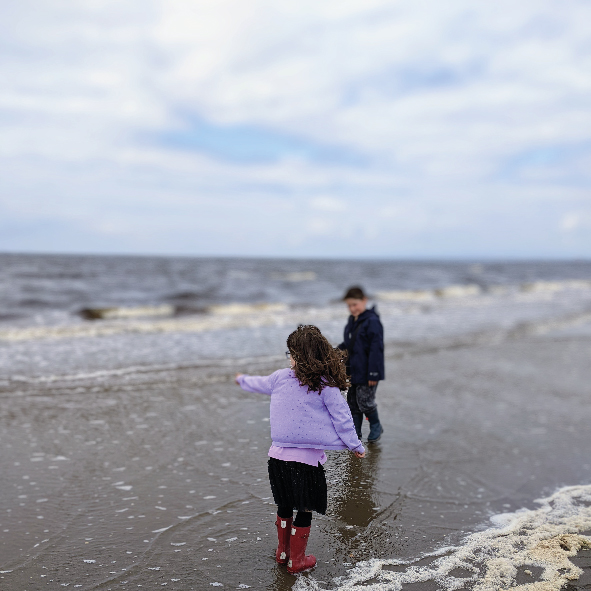Spotlight of the Month – @ourallergystory
I grew up in the historic county of Ayrshire, in south-west Scotland with my twin sister and brother. I now live in Hertfordshire with my husband, two children and dog, Pepper. You can find me at home recipe testing and cooking delicious allergy-friendly food, enjoying family dog walks with Pepper in the local countryside, running to clear my head and stay fit, and ending the day reading a fiction book. I am a freelance Chartered Marketer and also studying for a Diploma in Nutrition.
When were you introduced to allergies and how have you managed this?
I was first introduced to allergies when my son was four months old and diagnosed with a milk allergy. Over the course of the next few months, he was also diagnosed with allergies to egg, peanut, tree nuts, sesame, fish and shellfish. By communicating effectively with our nursery and school, planning ahead and being proactive, keeping on top of prescriptions and allergy appointments, reading food labels, adapting recipes, and staying informed with the latest developments in food allergy, we have effectively managed food allergies for over a decade. When eating out, we research restaurants in advance that can accommodate our son’s food allergies by checking menus online and calling ahead to speak with the chef and staff. It also involves us bringing safe snacks everywhere with us!


What is your best piece of advice for parents who have just discovered their child has been diagnosed with allergies?
I remember feeling a wide range of emotions when my son was first diagnosed with food allergies; Initial relief with a definitive diagnosis but also huge waves of overwhelm navigating all the new and complex challenges of food allergy life alone. I also felt anxious before and during social events involving food, and guilt that I had no previous knowledge of food allergies, repeatedly questioning whether I could have done anything differently. As my knowledge grew, I became increasingly frustrated about the lack of awareness and understanding in society about food allergies, and how much planning it took to keep my son safe in a world where it felt like everyone else was completely oblivious to the dangers.
I have 10 pieces of advice I would love to share with any parent or carer whose child has just been diagnosed with food allergies:
1. Know the symptoms of anaphylaxis and how to respond: The leaflet “Reducing the risk of your child having a serious allergic reaction” details things you can do to reduce the risk of a serious allergic reaction and the key points to remember in the event of an allergic reaction. Download the guide here. It’s a really helpful resource for anyone involved in the care of a person with food allergies.
2. Learn about managing food allergy life: Read “My Family and Food Allergies – The All You Need to Know Guide” by 2022 Free From Hero Award Winner Alexa Baracaia. This book covers every aspect of the journey from diagnosis to helping your child on the path to independence and everything in-between such as explaining food allergies, shopping for your food allergic child, preparing food and eating out, holidays, travel and key milestones such as starting nursey, starting primary school and transitioning to secondary school. It will help you so much on your food allergy journey. To get yours now click here.
3. Read up on your child’s specific allergens: Anaphylaxis UK have downloadable factsheets on specific allergens, both within the top 14 such as milk, egg, fish and nuts, as well as outside of the top 14 such as alpha-gal, banana, buckwheat, kiwifruit, legumes & pulses and pollen food syndrome. The factsheets list foods made with that allergen and how to specifically avoid that allergen. https://www.anaphylaxis.org.uk/factsheets/
4. Create an Allergy Action Plan with your Healthcare Professional: Work with your child’s allergist to create this emergency action plan. It includes steps to take in case of an allergic reaction and information on when to use an epinephrine auto-injector. We keep a copy of our son’s Allergy Action Plan in his medical bag and our school has a copy too. You can download an Allergy Action Plan here.
5. Learn to read food labels: Allergens can be hidden in unexpected places so read every food label every time. Familiarise yourself with common terms used on labels that indicate the presence of allergens. Note, vegan doesn’t necessarily mean free from milk and egg.
6. Teach your child about their food allergy: Teach your child about their allergy in an age-appropriate manner. Help them understand which foods to avoid, how to read food labels, and how to communicate their allergy to others. Consider purchasing a Medical ID bracelet for your child. My son loves his Medicalert bracelet and wears it for school trips and eating out.
7. Educate caregivers, teachers, family and friends: Inform caregivers, teachers, and other adults responsible for your child’s well-being about food allergy. Provide them with the Allergy Action Plan and leaflet mentioned above and make sure they know how to use any necessary medications. The more people are aware of food allergies the safer your child will be in their care.
8. Stay informed about research and treatments: Keep yourself updated on the latest research, treatments, and developments related to food allergies. New information may emerge that could positively or negatively impact your child’s care.
9. Join support groups: Connect with other parents who have children with food allergies. Support groups such as those run by The Allergy Team can provide valuable insights, advice, and a sense of community.
10. Eating Out: Eating out with food allergies can present challenges, however, it’s important our son is able to experience this social activity which connects us to family and friends, and allows him to explore different cuisines, flavours and cooking techniques. We love trying new restaurants so we take our Equal Eats food allergy cards everywhere. We feel safer eating out with our cards as they help to communicate our son’s dietary restrictions effectively, accurately and conveniently.


What is your advice for parents navigating food shopping, where is your favourite place to shop or what are your favourite products that you know you can rely on?
My favourite places to shop include:
My local Longdan which stocks a wide range of allergy-friendly products I buy regularly including:
– Creative Nature cake mixes, chia seeds and cocoa powder, all of which are top 14 allergen free
– Free From Fellows top 14 free marshmallows which my kids love baking with and adding to their hot chocolates
– Doves Farm Freee Choc Chip Cookies which are generous in size and delicious as well as free from gluten, milk, egg and nuts
– Biona Organic Worcester sauce which is flavoursome and fish-free
My local Holland & Barrett stocks:
– Wow Butter which is a nut-free spread and such a great alternative to peanut butter
– Sweet Freedom choc shot for a delicious, nut-free chocolate spread option and what my kids love smothering on their pancakes and filling their wraps with.
What would you like to see happen for people living with allergies in the next 5 years?
– More allergy awareness amongst people, institutions, establishments, organisations and society in general
– Free from products that are actually free from allergens and not a ‘may contain’ for those allergens. Also, improved food labelling to ensure consistency with ‘may contain’ statements
– Changes to school policies to protect all pupils with food allergies and every school adopting the Schools Allergy Code
– Advances in technology solutions for eating out more safely
– Emerging and current treatment options becoming available to everyone who needs it


Could you please tell us about all the amazing things you have done for the allergy community?
Over the years I have been involved in a variety of activities to raise awareness of food allergies. One of my biggest challenges was running a half marathon in 2020 – The Vitality Big Half – and I was delighted to raise £860 for Anaphylaxis UK.
Every year I get involved with Allergy Awareness Week at my children’s primary school. My son also loves to take part and has given presentations to his class on what it’s like living with food allergies.
In February 2021, I set up my Instagram account @ourallergystory to connect with the allergy community further and support families living with food allergies. Every week I receive messages from parents asking for tips or saying how helpful my account is and that it gives them hope when they see an older child managing their allergies. I also share my allergy-friendly recipes and free from product finds which people say they find really helpful.
In October 2023 we took part in an interview with BBC London News to share our story about living with severe food allergies and raise awareness about the new leaflet written by allergists “Reducing the risk of your child having a serious allergic reaction”. Many families reached out to me after that and thanked us for describing our experiences and showing how you can balance a fulfilling life, treatment and staying safe with food allergies.
In the lead up to Christmas 2023, the allergy community couldn’t find any allergy-friendly chocolate coins. When I found a box of nut-free chocolate coins in my local store, I bought extra bags and posted them out to the allergy community. It was really special to know that 10 children were waking up on Christmas day and enjoying eating safe chocolate coins.
I’m extremely proud that 2024 is my second year as an Ambassador for Equal Eats. This company is dedicated to supporting our community to eat safer around the world, providing solutions and tools to help people living with dietary restrictions. I share our own experiences eating out with our food allergy cards and this year I’ll be documenting going abroad for the first time and sharing travel tips.
This year I’m also working with Vitalite dairy-free spread and I’m involved in some super exciting projects.





